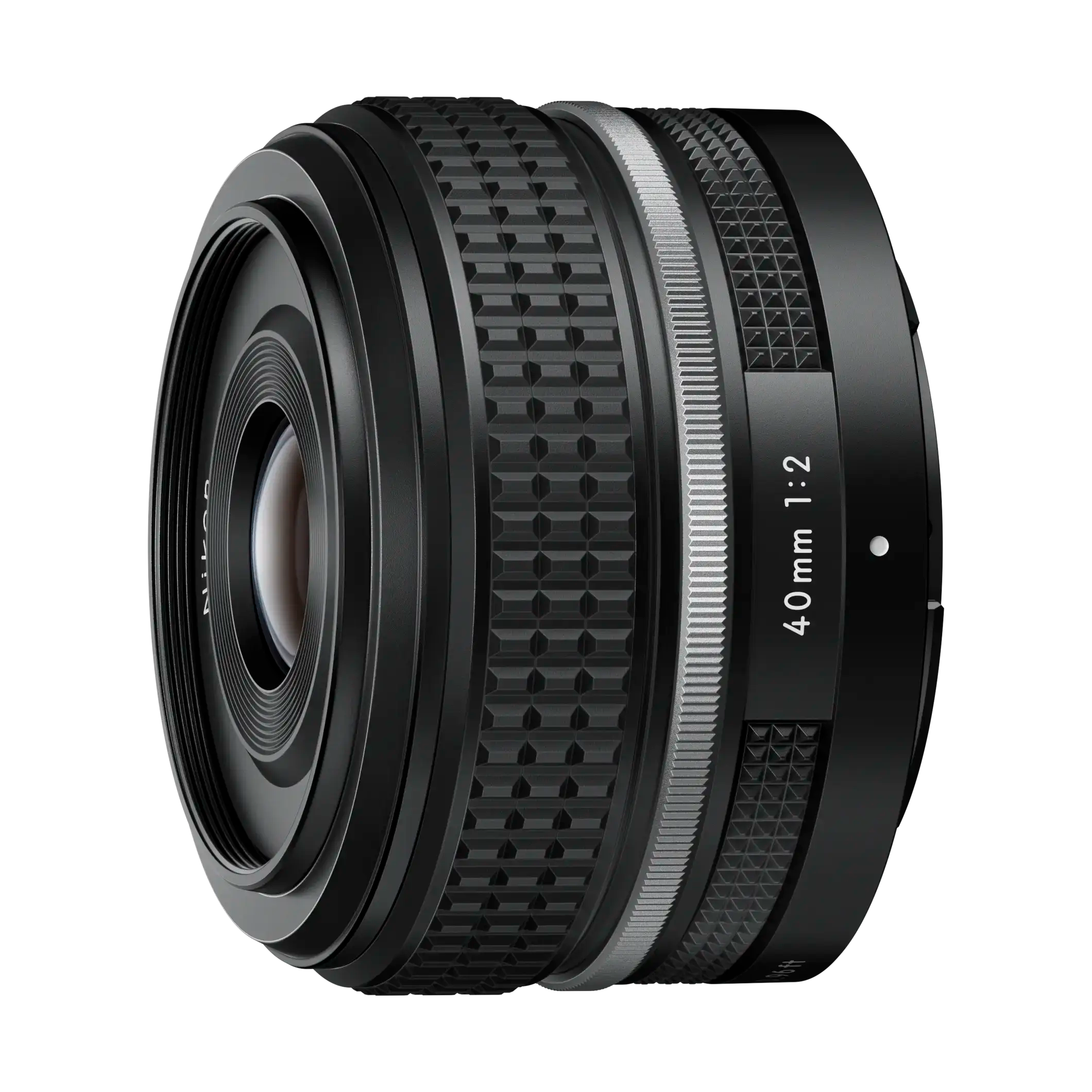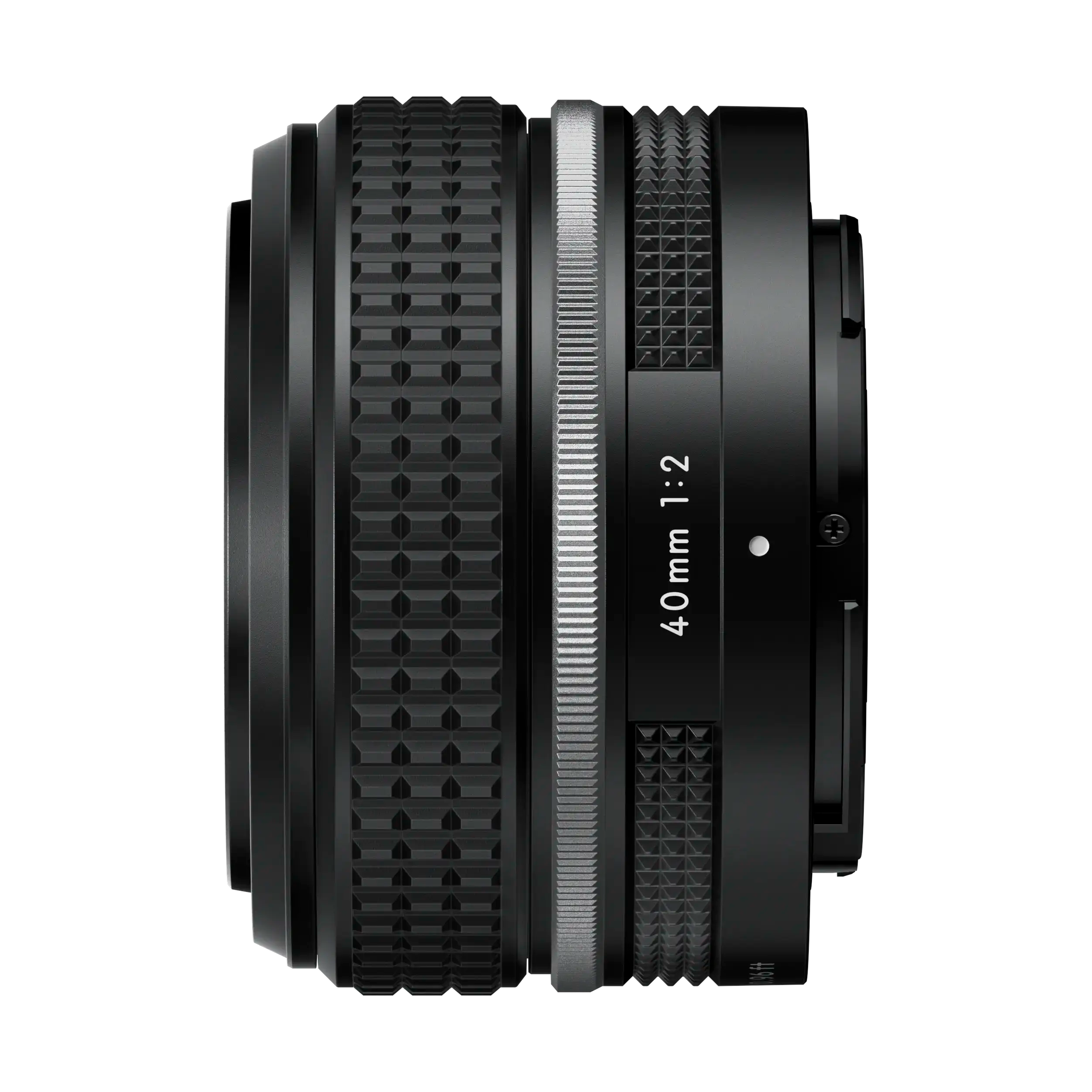Product Description
Nikon NIKKOR Z 40mm f/2 (SE) Lens
The Nikon NIKKOR Z 40mm f/2 (SE) Lens combines a vintage-inspired design with modern optical performance. This versatile prime lens is ideal for everyday use, offering a unique focal length for a variety of photography styles. Its compact size and bright f/2 aperture make it perfect for spontaneous shooting, while its stylish retro design nods to Nikon's classic FM film cameras.

Key Features:
- Z-Mount Lens/FX Format: Designed for full-frame Nikon Z-mount mirrorless cameras.
- Aperture Range: f/2 to f/16: Bright maximum aperture for low-light performance and depth of field control.
- Special Edition Vintage Design: Features a retro NIKKOR logo and typeface, with checked knurling and a silver band.
- Two Aspherical Elements: Reduces spherical aberrations and distortion for sharper, more accurate images.
- Super Integrated Coating: Minimises flare and ghosting for improved contrast and colour fidelity.
- Stepping Motor AF System: Provides fast, quiet, and smooth autofocus, ideal for both stills and video.
- Programmable Control Ring: Customisable for aperture, exposure compensation, or focus adjustments.
- Rounded 9-Blade Diaphragm: Enhances bokeh quality for smooth, out-of-focus backgrounds.
Vintage Design Meets Modern Performance
The NIKKOR Z 40mm f/2 (SE) combines classic aesthetics with cutting-edge optical performance. The special edition design incorporates a retro NIKKOR logo, checked knurling, and a contrasting silver band, echoing the look of Nikon's legendary FM film cameras. Its compact form factor makes it a perfect walkaround lens for both FX and DX-format Nikon Z mirrorless bodies, where it offers a 60mm equivalent focal length on DX cameras.

Fast and Versatile
With a bright f/2 maximum aperture, this lens excels in low-light conditions and offers excellent control over depth of field, making it ideal for portraiture and selective focus photography. The wide-normal 40mm focal length is well-suited to everyday shooting, from street photography to casual portraits.
High-Quality Optics
The optical design of the NIKKOR Z 40mm f/2 (SE) includes two aspherical elements that minimise spherical aberrations and distortion, resulting in sharp, clear images with accurate rendering. Nikon’s Super Integrated Coating reduces flare and ghosting, ensuring rich contrast and vibrant colours even in challenging lighting conditions.

Silent and Smooth Autofocus
A stepping motor provides fast, quiet, and precise autofocus, making it ideal for capturing both stills and video. The lens also features full-time manual focus override for fine-tuning focus when needed. Thanks to its internal focusing design, the lens maintains its compact size while offering faster focusing speeds.
Customisable Control
The lens is equipped with a programmable control ring, which by default adjusts manual focus but can also be customised to control aperture or exposure compensation. This feature adds versatility, allowing for quick adjustments to settings while shooting.
Beautiful Bokeh
The rounded 9-blade diaphragm helps create a pleasing bokeh effect, ideal for isolating subjects with a shallow depth of field and enhancing the aesthetic quality of out-of-focus backgrounds.
Contents:
- Nikon NIKKOR Z 40mm f/2 (SE) Lens
- Front Lens Cap
- Rear Lens Cap
- Lens Hood
With its blend of classic styling and modern optical technology, the NIKKOR Z 40mm f/2 (SE) is an excellent choice for photographers seeking both form and function. Whether you're shooting portraits, landscapes, or street scenes, this versatile lens delivers sharp, vivid images with style.
Payment & Security
Your payment information is processed securely. We do not store credit card details nor have access to your credit card information.

















